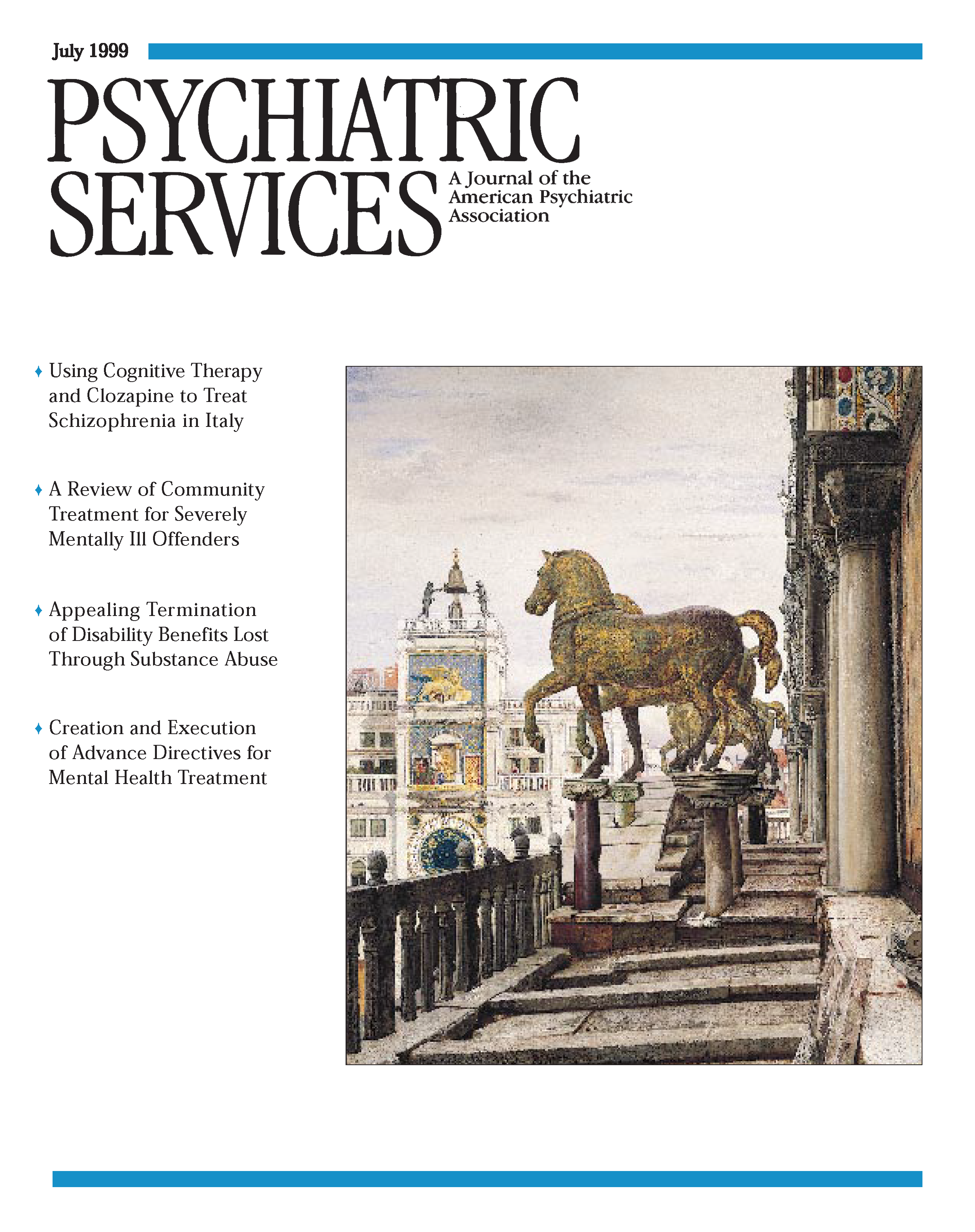Demographic characteristics
The sample was composed of 430 men (75 percent) and 140 women (24 percent). Three respondents did not indicate gender. The mean±SD age was 49.6±10.6 years, with a range from 30 to 80 years. The mean±SD time since completion of residency training was 16.6±11.3 years, with a range from one to 57 years. Seventy-three respondents (13 percent) considered their psychiatric training biological, 112 (20 percent) reported that it was dynamic, and 380 (67 percent) reported that it was eclectic. Eight persons did not answer the question.
Of the 573 currently practicing psychiatrists, 170 (30 percent) had prescribed MAOIs in the past three months; 82 (14 percent), three to 12 months ago; 96 (17 percent), one to three years ago; and 154 (27 percent), more than three years ago. Sixty-eight of the 573 respondents (12 percent) had never prescribed MAOIs. A total of 296 respondents (52 percent) prescribed MAOIs rarely or less than once a year, 178 (31 percent) occasionally, and only 13 (2 percent) frequently. Some respondents did not answer this question.
No significant differences were found in prescribing practices by type of training. Among the 73 psychiatrists who considered their training to be biological, two (3 percent) prescribed MAOIs frequently, compared with nine (3 percent) of those with eclectic training and two (2 percent) of those who considered their training to be dynamic. Similar percentages of these groups reported never prescribing MAOIs: 3 percent of respondents from biological programs, 3 percent of those from eclectic programs, and 2 percent of those from dynamic programs.
One analysis was restricted to the 479 currently practicing psychiatrists who had completed training at least five years ago. The mean±SD length of time since residency training for this group was 19.3±10.3 4 years. In this group, 4 percent of those from biological programs prescribed MAOIs frequently, compared with 3 percent from eclectic programs and 2 percent from dynamic programs (χ2=14.9, df=6, p=.021).
We also determined the training of the 68 respondents (12 percent) who reported never prescribing the drugs. Among those who considered their training biological, 12 (17 percent) never prescribed MAOIs, compared with 34 (9 percent) of those with eclectic training and 22 (20 percent) of those from dynamic programs.
As for the particular MAOI prescribed, 217 respondents (45 percent) reported having prescribed phenelzine, 50 (10 percent) had prescribed tranylcypromine, and 215 (45 percent) had prescribed both medications.
The most important deterrent in never or rarely prescribing MAOIs was potential interactions, reported by 139 respondents (35 percent). Other deterrents were side effects, reported by 43 respondents (11 percent); a preference for other treatments such as SSRIs, 122 (30 percent); the dietary restrictions necessary for patients taking MAOIs, 76 (19 percent); potential legal complications, 11 (3 percent); lack of training in the use of the drugs, six (2 percent); and lack of belief that MAOIs are efficacious, four (1 percent). None of the respondents stated that the major deterrent to prescribing the drugs involved restrictions related to managed care.
Respondents were asked if they believed that MAOIs were useful in the treatment of various conditions. A total of 528 respondents (92 percent) believed that MAOIs were useful for treatment of atypical depression; 365 (64 percent) for major depression; 308 (54 percent) for major depression, melancholic type; 318 (56 percent) for panic disorder with or without agoraphobia; 253 (44 percent) for social phobia; 156 (27 percent) for dysthymia; 107 (19 percent) for posttraumatic stress disorder; and 70 (12 percent) for obsessive-compulsive disorder.
Respondents were asked to choose one medication type as a preferred first-line agent for atypical depression. A total of 464 (83 percent) selected SSRIs; 36 (6 percent), bupropion; 27 (5 percent), venlafaxine; 12 (2 percent), MAOIs; 11 (2 percent), nefazodone; eight (1 percent), tricyclic antidepressants; and two (less than 1 percent), mirtazapine.
When asked for their single preferred first-line agent for social phobia, 430 (78 percent) selected SSRIs; 52 (9 percent), other medications; 29 (5 percent), tricyclic antidepressants; 16 (3 percent), MAOIs; 12 (2 percent), bupropion; seven (1 percent), nefazodone; five (1 percent), venlafaxine; and one (less than 1 percent), mirtazapine.

